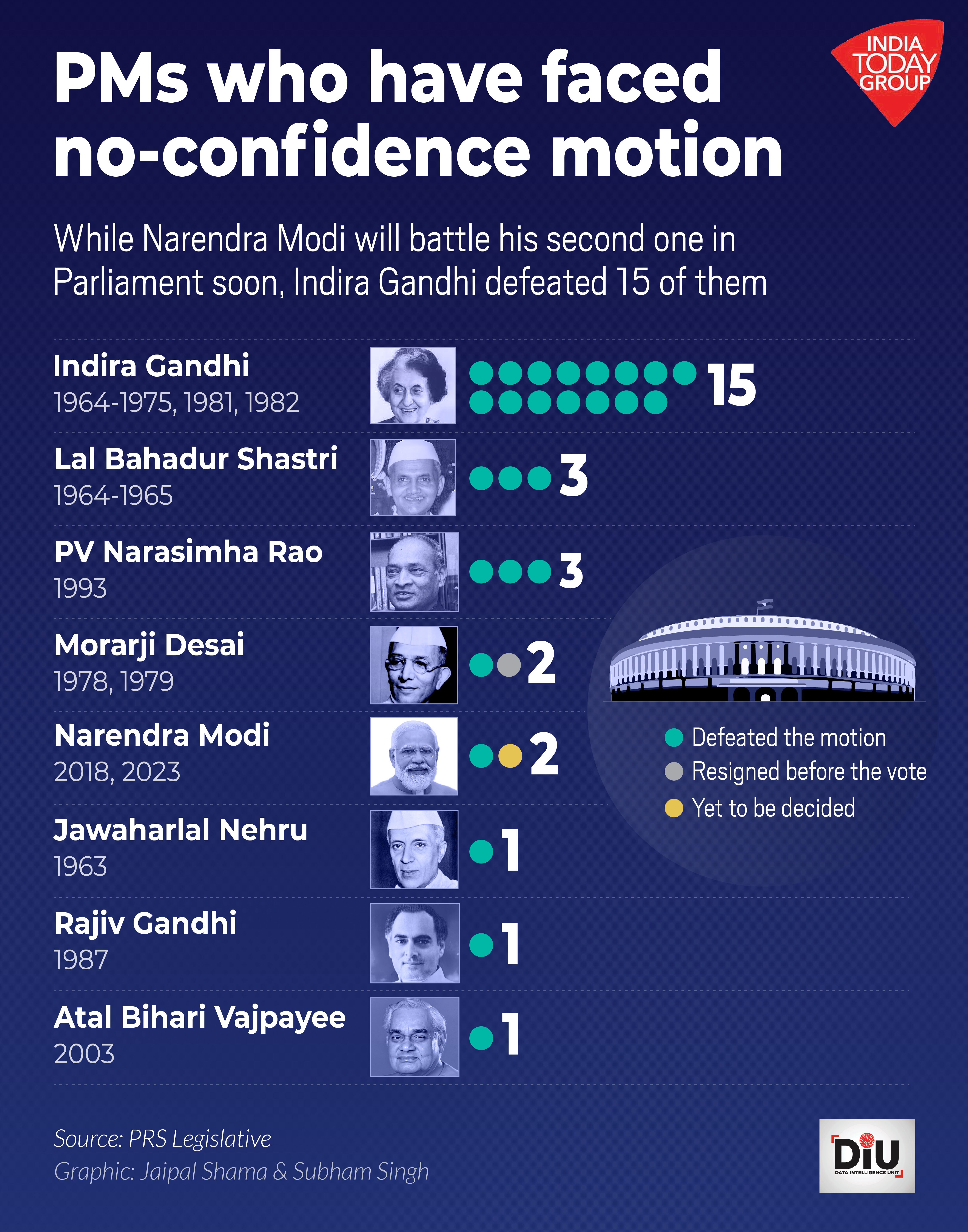
No-confidence motions: Why the process is as important for democracy as results
A no-confidence motion against the government is generally moved by the Opposition to express its lack of confidence in the government in power. If such a motion is passed, the government has to resign.

The leading Opposition party in the Lok Sabha moved a no-confidence motion against the Narendra Modi-led Bharatiya Janata Party government. This is the second no-confidence motion that PM Modi has faced in his tenure — the previous one was defeated as the BJP enjoyed a comfortable majority.
A no-confidence motion against the government is generally moved by the Opposition to express its lack of confidence in the government in power. If such a motion is passed, the government has to resign. It follows the basic principle of a parliamentary system: a government remains in power only as long as it enjoys the confidence of the majority.
It is important to note that in the history of the Lok Sabha, a no-confidence motion has never been passed.
The Morarji Desai government faced a no-confidence motion which remained inconclusive. The motion coincided with a split in the ruling Janata Party. As the debate over the motion continued, every day, members left the Janata Party to join the splinter group formed. The day the Janata Party MPs in the Lok Sabha fell below the 50 per cent mark, Desai resigned, leaving the no-confidence motion unnecessary.
Indira Gandhi faced fifteen such motions, which were all defeated. Lal Bahadur Shastri and PV Narasimha Rao faced three each, which were defeated. Jawaharlal Nehru, Atal Bihari Vajpayee, and Manmohan Singh faced one no-confidence motion each. These too were defeated.
PMs who faced no-confidence motions
Thus, a no-confidence motion provides a platform for the Opposition to cast a spotlight on what it perceives as failures of the government. On the other hand, it gives the ruling party the chance to defend its record in governance. Given the fact that we have a Lok Sabha election in less than a year, this latest motion could well be the first cut of the election campaign for 2024. It could also indicate the strategy of the Opposition in confronting the government and the approach that the ruling party in defending its performance across two terms. If the no-confidence debate were to be essentially negative and involve personal accusations, it could provide a snapshot of what to expect in the 2024 election campaign.
What is often less focused on is confidence motions that have been moved in the Lok Sabha. A confidence motion is moved by the government to demonstrate its majority support in the House. It is important to note that three Prime Ministers resigned when they failed to get a confidence motion passed on the floor of the House.
Confidence motions have been common post-1989, ever since the phase of coalition governments came to be formed. When the majority support enjoyed by the Prime Minister would become unclear, the President would often direct the prime minister to prove their majority within a stipulated period. VP Singh, Chandra Shekar, Vajpayee, HD Deve Gowda, and IK Gujral moved confidence motions to prove their majority.
VP Singh was the first Prime Minister to be defeated in a confidence vote in 1990. His National Front government was formed with the outside support of Left parties and the BJP. Soon after the Janata Dal-led government in Bihar stopped LK Advani’s Rath Yatra, the BJP withdrew its support to the government. VP Singh maintained he had a majority and offered to prove the same on the floor of the House. When he was defeated in the confidence vote, it allowed him to say, “I lost my Prime Ministership defending the Babri Masjid.”
Which PM had highest support?
In 1996, the thirteen-day-old Vajpayee government moved a confidence motion. There was no vote on the motion as the prime minister announced his resignation before the voting.
Deve Gowda was the second prime minister to be defeated in a confidence motion. When the Congress withdrew support to the United Front government, the prime minister maintained that he had a majority. The confidence motion he moved was defeated and led to his resignation.
The third PM to be defeated in a confidence motion was Atal Bihari Vajpayee in 1999. Vajpayee volunteered to move the confidence motion when the AIADMK withdrew from the National Democratic Alliance.
An interesting controversy that erupted during the debate was the entry of Odisha Chief Minister Giridhar Gomango, who joined the Congress benches. Gomango was the chief minister of Odisha but had not yet resigned from his Lok Sabha seat. So, he had come to the House to vote with his Congress party. The BJP strongly objected to his presence, but the speaker ruled in his favour. Gomango participated in the voting, and the Vajpayee government lost the confidence motion by one vote!
The bedrock of a parliamentary government is the majority support it enjoys in the lower house. Voting on confidence and no-confidence motions are ways to indicate this. It is crucial to understand that the process is as important as the result. The debates and speeches made (especially in the age of 24x7 access through the media) are vital opportunities for party leaders to express their points of view.
(Dr Sandeep Shastri is a keen student of politics for four decades and is currently Director - Academics, NITTE Education Trust, and National Coordinator, Lokniti Network. His last book was on Lal Bahadur Shastri - Power and Politics published by Rupa and Co.)


